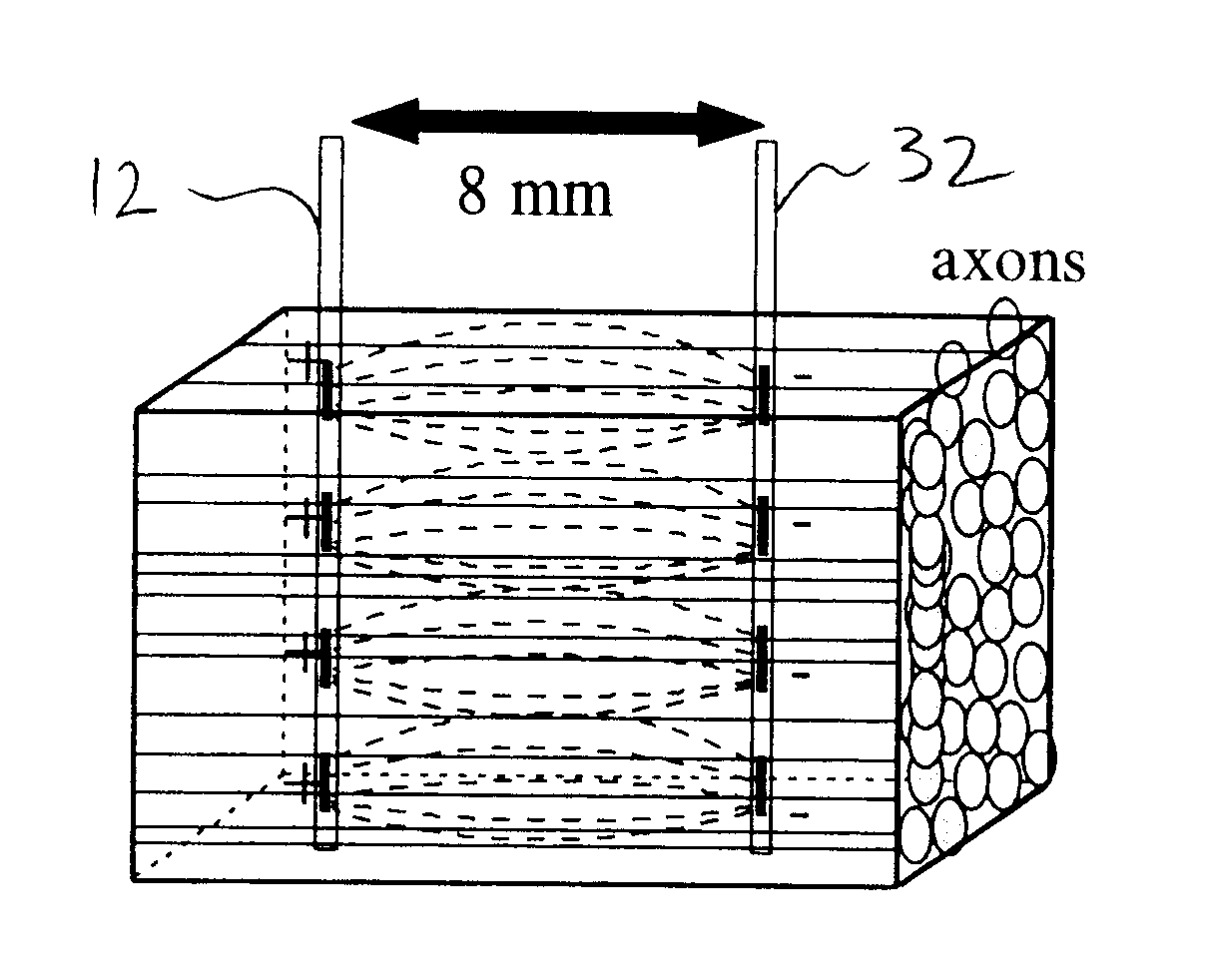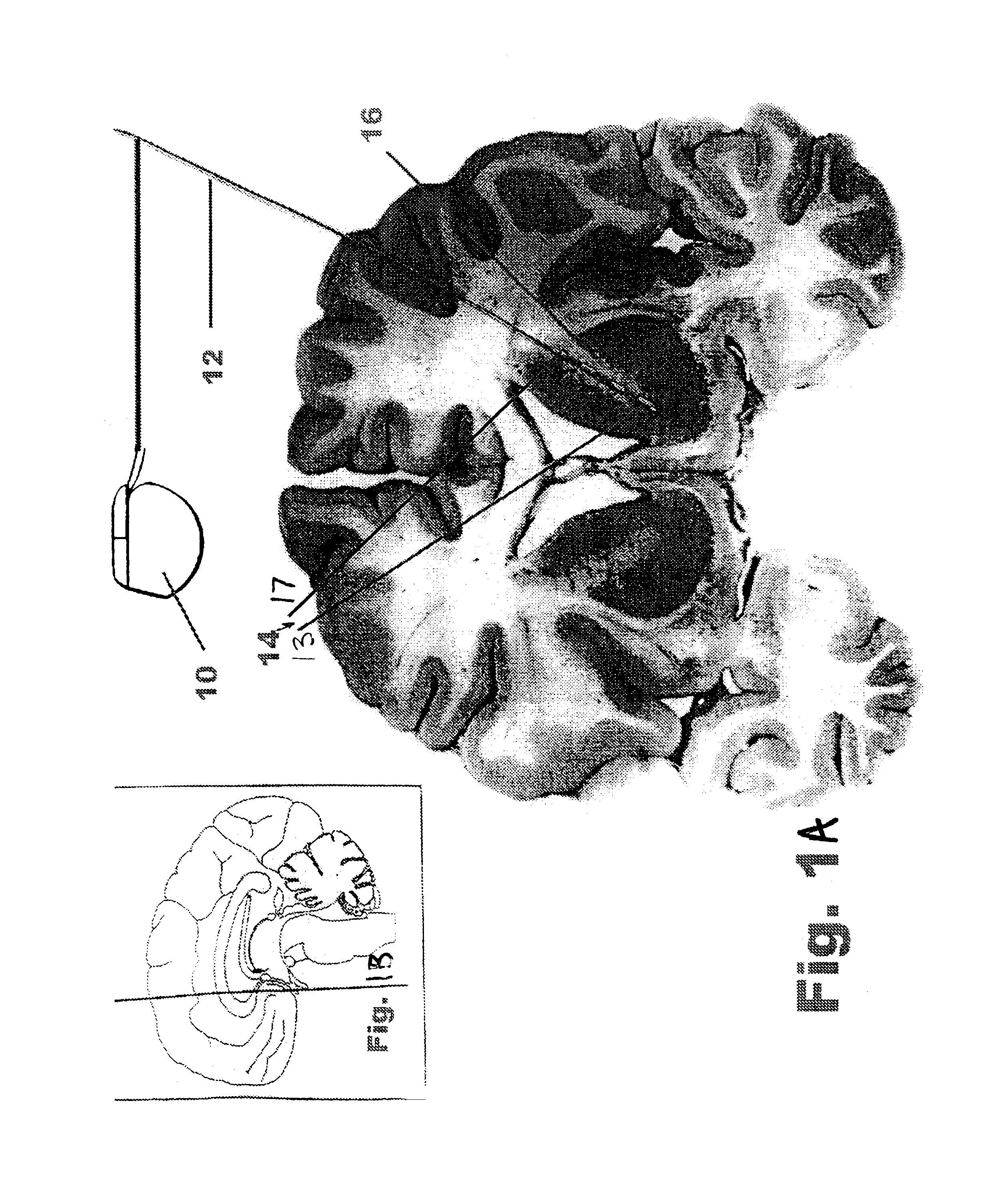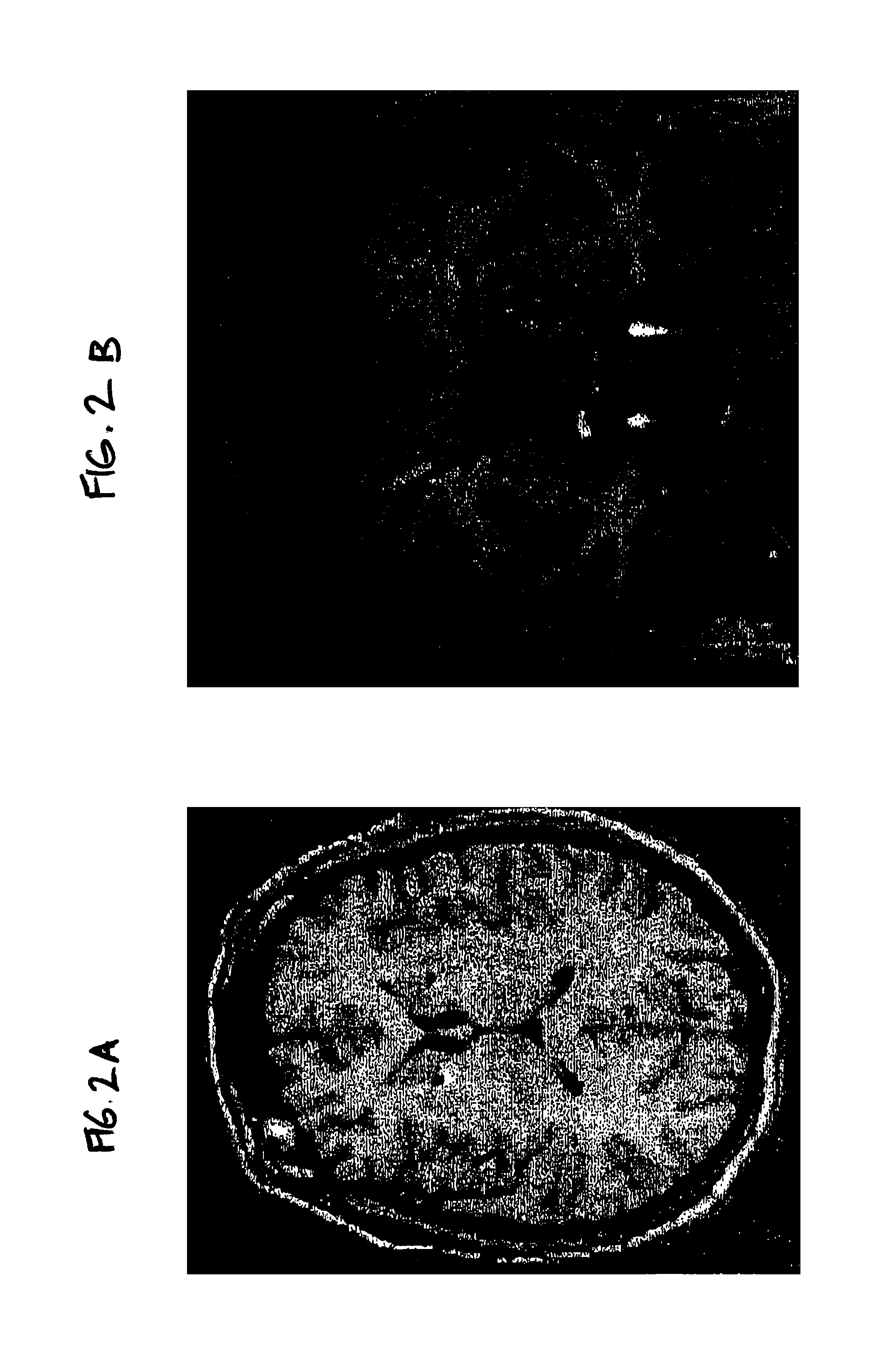Method for treating obsessive-compulsive disorder with electrical stimulation of the brain internal capsule
a brain internal capsule and obsessive-compulsive disorder technology, applied in the field of central nervous system disorders, can solve the problems of occupying a great amount of time and energy, affecting the treatment effect, and causing anxiety or distress
- Summary
- Abstract
- Description
- Claims
- Application Information
AI Technical Summary
Problems solved by technology
Method used
Image
Examples
Embodiment Construction
[0037]FIG. 1A shows a coronal cross-sectional view of a stimulation lead placed in the internal capsule embodiment and FIG. 1B shows a sagittal cross-sectional view of the brain illustrating the location of the coronal cross-section of FIG. 1A. The method of the present invention for treating a patient with an obsession, a compulsion or an anxiety or depression disorder comprises applying electrical stimulation to at least a portion of the patient's anterior limb of the internal capsule or immediately surrounding structures including but not limited to the head of the caudate nucleus, putamen or nucleus accumbens. This electrical stimulation is preferably provided by means of an electrical signal generator 10 (also known as a neurological stimulator) and an implantable lead 12 (also know as a stimulation lead or a first lead). The lead 12 has a proximal end coupled to the signal generator 10 and a stimulation end having at least one electrode 14. At least one electrode 14 (also know...
PUM
 Login to View More
Login to View More Abstract
Description
Claims
Application Information
 Login to View More
Login to View More - R&D
- Intellectual Property
- Life Sciences
- Materials
- Tech Scout
- Unparalleled Data Quality
- Higher Quality Content
- 60% Fewer Hallucinations
Browse by: Latest US Patents, China's latest patents, Technical Efficacy Thesaurus, Application Domain, Technology Topic, Popular Technical Reports.
© 2025 PatSnap. All rights reserved.Legal|Privacy policy|Modern Slavery Act Transparency Statement|Sitemap|About US| Contact US: help@patsnap.com



